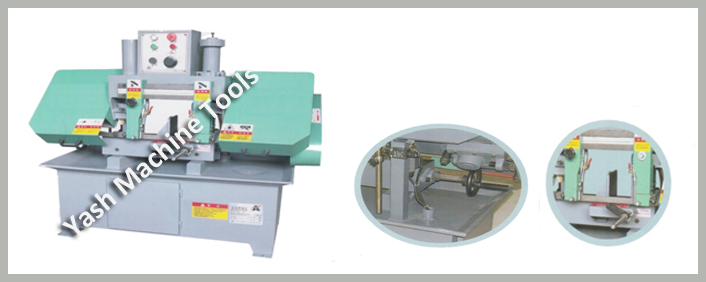How to Use a Bandsaw Machine?
When you buy a Bandsaw Machine, you should look into several factors. One is how the machine works. Bandsaws use a shuttle-vice. This means the blades have bent teeth. Tracking the blade is crucial for accurate cutting. Releasing blade tension can also prolong the life of the machine. This article will discuss some of the most common issues regarding the use of Bandsaw machines. It will also help you get started on the right footing for your new machine.
Bandsaw Machine Uses a Shuttle-Vice
Most bandsaw machines are electric, and many of them are equipped with a shuttle-vice to keep material bundles tight during the cutting process. This type of vice is optional for most models, but it’s standard on fully automatic mitering bandsaws. The shuttle-vice is used to secure the bundle before the saw advances to the next stage in the cutting process. If you’re looking to save some money on your next bandsaw machine, a shuttle-vice is the way to go.
The drive sprocket 56 rotates clockwise to move a chain 58 around sprockets and towards the shuttle-vice 32. A reversible electric motor, servomotor, or hydraulic motor controls the movement of the drive sprocket. An encoder detects any movement that may cause the shuttle-vice to move out of alignment and prevent the chain from advancing.
Bandsaw Blades Have Bent Teeth
The best way to cut metal with bandsaws is to use the highest-quality tooth blade. This type of blade is ideal for cutting sheet metal with very thin teeth. The bandsaw blade needs to be properly tensioned and should be released after each cut. For further information, see “How to Use a BandSaw.”
If one side of the blade has more teeth than the other, this is due to a variety of different reasons. These factors can include improper material, a poor cutting quality, or even improper setup of the machine. A blade set up improperly can result in the tooth tips wearing unevenly. Additionally, a bandsaw blade may have an outlet on one side that prevents it from slotting into the bed. The extra force puts extra stress on the teeth and can lead to blade breakage.
The thickness of a bandsaw blade is measured in TPI. The TPI is a measure of the number of teeth in the blade. Bandsaw blades with a higher TPI will perform better than those with smaller teeth. A band saw blade is most effective when it has at least three teeth in the stock material. The set of cutting teeth also refers to the order in which the teeth are arranged. When choosing a band saw, make sure to read the information carefully.
Proper Blade Tracking is Crucial to Accurate Cutting on Bandsaw Machine
High-speed bandsaw blades should be close to the center of the crown. Too much or too little tension will increase blade wear and breakage. Also, if the blade works itself off the wheel, it is out of alignment and may cause injury. Correct tracking will allow the blade to be positioned in the proper position. To ensure accurate cutting on a bandsaw machine, blade tracking is crucial.

Once a saw blade is correctly tracked, it will run smoothly between the wheels without making a screeching noise. To make sure that your blade is correctly tracking, follow a few basic steps. First, unplug the power cord from the saw. Next, remove the v-belt and blade guards. Then, tilt the upper wheel towards the body of the saw. Finally, readjust the blade tracking on a bandsaw machine.
Releasing Blade Tension in Bandsaw Machine Can Extend Machine Life
There are several common sense ways to ensure that your saw blades last for as long as possible. Release the tension when the machine is idle, and always use a rust-preventive spray. If possible, store the blades in a dry place. Don’t drop them, as dropping blades will shorten their life. Always follow the manufacturer’s recommendations for blade life. Moreover, you can reuse the blades if possible.
The manufacturer of the machine will give you a chart of recommended blade tension. Typically, carbon steel toothed blades are tensioned between 15,000 and 25,000 PSI. Bandsaw blades are never tensioned above 35,000 PSI. If you notice uneven cutting, loosen the blade tension. Over-tightening the blade can reduce the life of the machine’s bearings and blade wheel rubber.
- Maintenance Tips for Vertical CNC Milling Machine in Iran’s Harsh Industrial Environment
- Market Potential for CNC Lathe Machines in South African Countries: Trends & Insights
- How Saudi Arabia’s Manufacturing Industry Rely on All Geared Radial Drilling Machines?
- Why All Geared Lathe Machines are Gaining Popularity in German Industry?
- Top Applications of Horizontal Boring Machines in Australian Manufacturing Industry
- The Growing Demand for All Geared Lathe Machines in Global Markets


